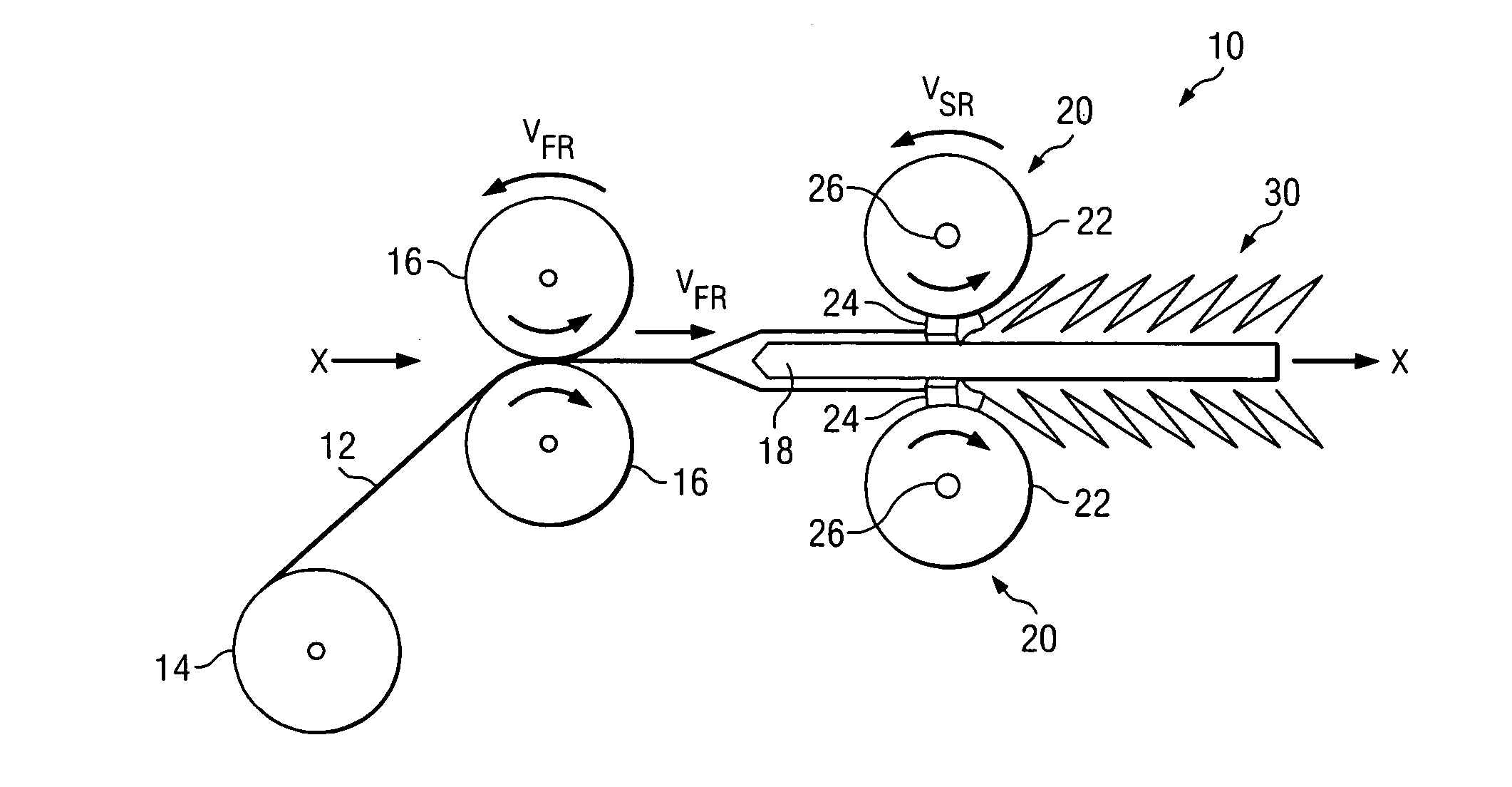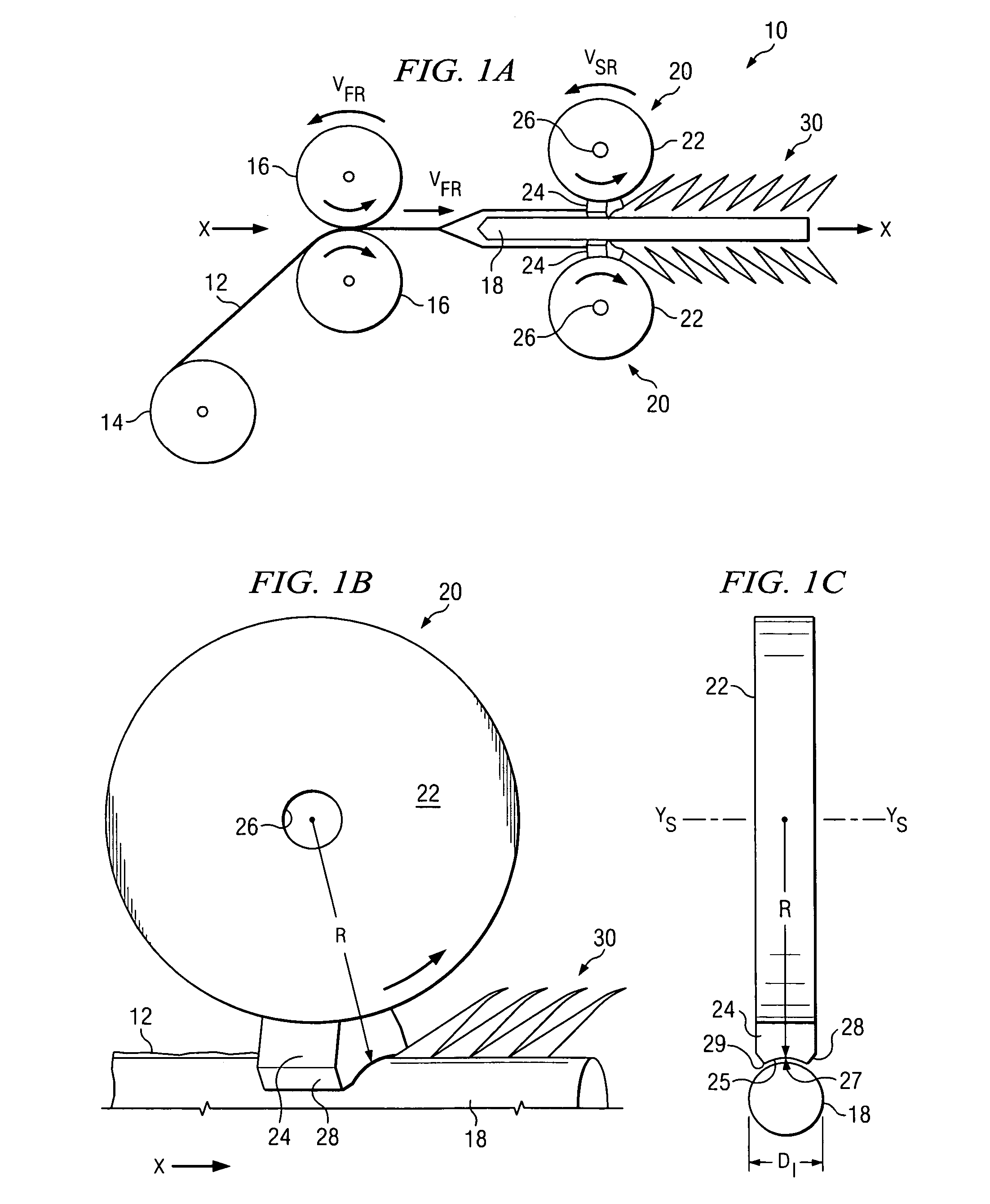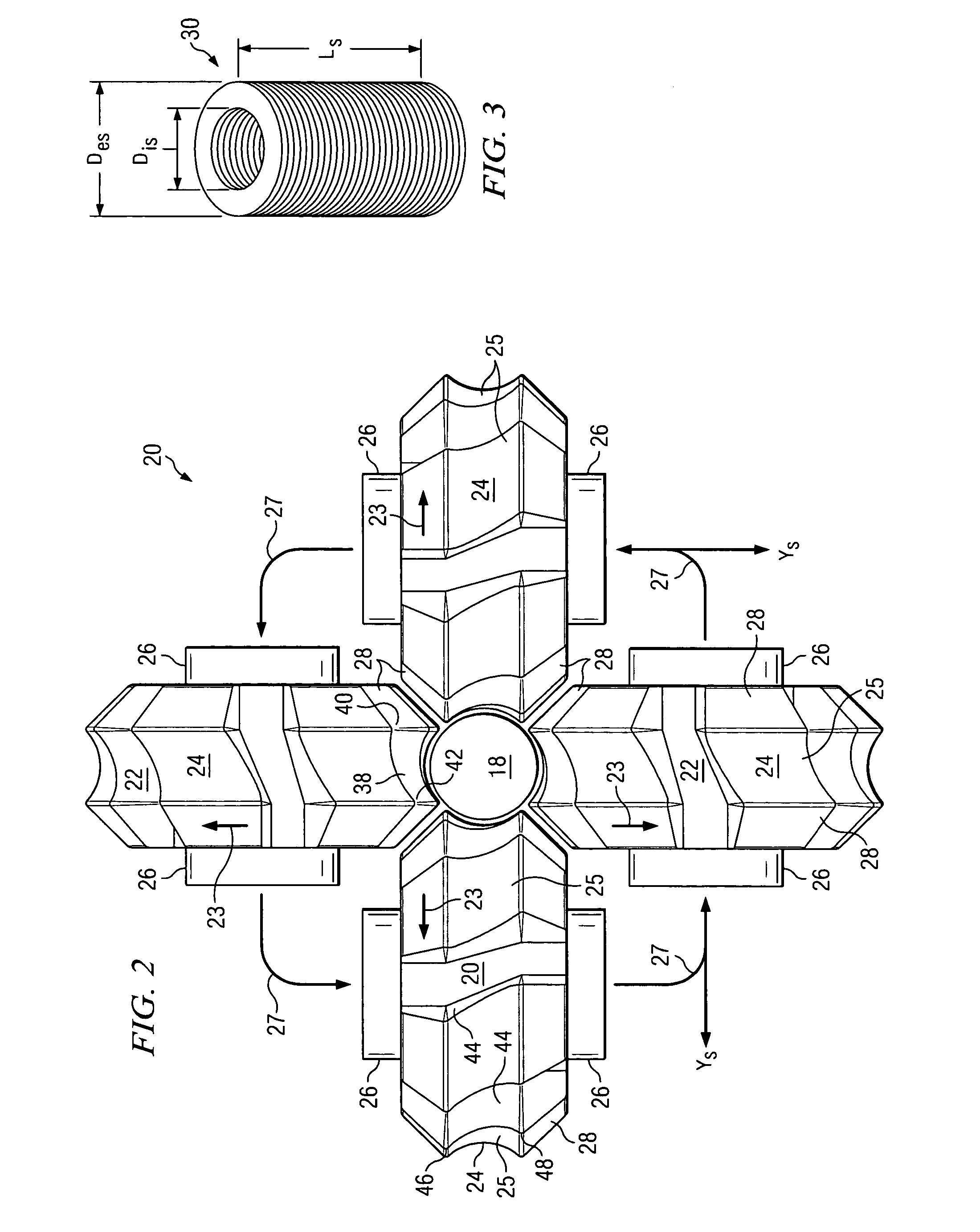Shirred casing
a casing and food technology, applied in the field of shirred food casings, can solve the problems of less adaptability to automatic stuffing process, limited shirring technique, and shirring of collagen casings
- Summary
- Abstract
- Description
- Claims
- Application Information
AI Technical Summary
Benefits of technology
Problems solved by technology
Method used
Image
Examples
example 1
Standard KüKo Axial Shirring Head
[0052]The first test was conducted using an axial shirring head as described above with respect to FIGS. 2A-2B. The shirring machine was the Küko 5 distributed by Küko Maschinenbau, (no longer commercially active), with the above-stated 35.5 mm mandrel with a Teflon coating. The casing was pre-moisturized to an average of 16% water to casing by weight, and of the type requiring soaking after shirring and prior to stuffing.
[0053]The casing was fed into the shirring machine at a velocity of VFR=145 m / min, and the shirring roll velocity VSR=346 m / min, for an overshirr of 238.6%. The clearances between the shirring teeth and the mandrel were 2.5 mm as measured with the shirring teeth proximate to the mandrel. Standard clearances using the existing shirring methods are about 2.5 mm to 5 mm to prevent the casing from bunching or becoming jammed in the shirring machine at the shirring head. This overshirr can also be determined by measuring the pleat pitch ...
example 2
Improved Shirring Method and Casing
[0055]Surprisingly, it has been discovered that by using the continuous spiral shirring head 20 illustrated by FIGS. 2A-2C above, and reducing the clearance between the shirring teeth 24 and the mandrel 18, shirred sticks 30 having pleat pitches far larger than the theoretical pleat pitch described above may be obtained. The most significant result of the longer pleat pitch is the ability to obtain shirred sticks 30 with outside diameter more than 15% greater than the casing inflated diameter on mandrels that have a diameter of at least 70% to 80%, and even as great as 90% of the casing inflated diameter. It is advantageous for the outside diameter of the shirred stick to be large, to achieve a volume in the shirred stick in which to pack casing, as discussed below, to be able to properly moisturize a casing that is designed to be soaked after shirring. Accordingly, with larger stick outer diameters more casing length can be metered into the shirre...
example 3
Improved Shirring Method and Casing
[0062]A third test was performed with a casing with an inflated diameter DI of 46.2 mm. The values of the relevant variables for this test were:[0063]DM=37.5 mm[0064]DI=46.2 mm[0065]DM / DI=81.2%
[0066]Again, reducing the overshirr to 129% the resulting shirred outer diameter Des was 54 mm, which was greater than the prior art at 51.5 mm. With example 3 the ratio of mandrel diameter to inflated casing diameter was 81.5%. The theoretical pleat pitch for this casing, according to formula (3), was 37.9 mm. After shirring, the shirred stick had a pleat pitch of 65 mm, which was 172% of the theoretical pleat pitch. Also, the DFW was 72.5 mm, which translates to a pleat pitch-to-dry flat width ratio of over 90%. More significantly, the shirred stick also had a ratio of shirred stick outside diameter-to-inflated casing diameter of 117% based on the DI of 46.2 mm.
[0067]The casing was shirred with a moisture content of approximately 18% by weight, so removing ...
PUM
 Login to View More
Login to View More Abstract
Description
Claims
Application Information
 Login to View More
Login to View More - R&D
- Intellectual Property
- Life Sciences
- Materials
- Tech Scout
- Unparalleled Data Quality
- Higher Quality Content
- 60% Fewer Hallucinations
Browse by: Latest US Patents, China's latest patents, Technical Efficacy Thesaurus, Application Domain, Technology Topic, Popular Technical Reports.
© 2025 PatSnap. All rights reserved.Legal|Privacy policy|Modern Slavery Act Transparency Statement|Sitemap|About US| Contact US: help@patsnap.com



